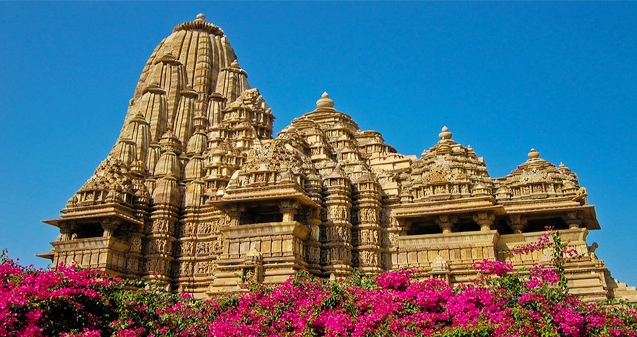
Khajuraho History
Ancient History
There are several viewpoints on the origins of the place. According to the ancient anecdotes narrated by Chandbardai, a court poet, Hemvati, the daughter of the high priest of Kashi, who was known for her matchless beauty, was bathing in a pond. Seeing her impeccable beauty, the moon god couldn't resist himself and took a human form to ravish her. The aggrieved maiden threatened to curse the moon god but the god decided to make amends for his faults by blessing her with a heroic son who was born in Khajuraho. The infant was named as Chandravarman, a valiant warrior, who built several temples and shrines in and around the region. According to the prophesy of the moon god, Chandravarma performed a 'yagya'(a scared ritual) so that Hemavati could get rid of her sin. This was how the place came into existence. However, many historians find the story uncredible and relate the origin of the city to the Chandelas. After a nomadic tribe attacked the northern region of Mlechcha, the Bargujar Rajputs moved towards the central plain of the continent and settled as Bundelas and Chandelas. The Bargujar Rajputs were the ones to construct the famous Kalinjar fort in the nearby region of the temple-city. Later, they erected many outstanding architectural pieces within the province that eventually went on to immortalize the city of Khajuraho.
Medieval History
During the medieval period in the 10th and 12th century, the Chandelas ruled the place. The city of Khajuraho was the cultural hub of the Chandelas while the Kalinjar fort served as their political centre. The district of Khajuraho prospered over a period of 200 years, with several holy shrines springing up. Under the leadership of Chandelas, the place continued to flourish. However, once the capital was shifted from Kalinjar to Mahoba, the prosperity of the Khajuraho began to wane. Apart from the Chandelas, the place also saw influences of several other kings who contributed to the art of sculpting in the region by adding several other temples.
16th to 19th Century
The temples of Khajuraho were developed over a period of many centuries and were much treasured by its kings and its local inhabitants, who took great measures to protect the temples from Mughal invasion. The descendents of the ruling kings feared that the temples would be demolished. The place was covered up by thick vegetations and was hidden by an oasis of greenery. In the 19th century, the city again resurfaced when the local people led an Englishman to the lost city of temples. By 1835, the Asiatic Society of Bengal published a detailed description of the shrines in the region. The record was written by Captain T. S. Burt and English engineer. By 1864, Khajuraho underwent several restoration work conducted by the Archeological survey team of India. In 1953, after Indian Independence, the monuments of Khajuraho were passed under the surveillance of the ASI. Today, these temples stands as an exemplary model of artistic refinements of the Indian kings.







